Complete Solutions to PHYSICS of chapter ELECTROSTATIC POTENTIAL AND CAPACITANCE of Class 11 book with complete answers and questions
| Class 11 | PHYSICS |
| Chapter | ELECTROSTATIC POTENTIAL AND CAPACITANCE |
| DISHA | PHYSICS |
| Number Of Questions | 42 |
| Academic Year | 2023-24 |
If n drops, each charged to a potential V, coalesce to form a single drop. The potential of the big drop will be
04:21View SolutionThe capacitance of a parallel plate capacitor is` C_(a)` (Fig. a). A dielectric of dielectric constant K is inserted as shown in fig. (b) and (c). If `C_(b)` and `C_(c)` denote the capacitances in fig. (b) and (c), then
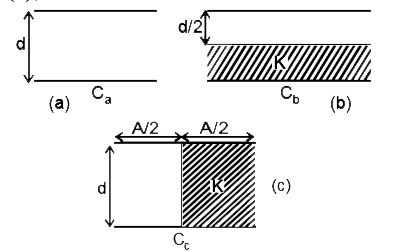 07:32View Solution
07:32View SolutionThe electric potential `V("x")` in a region around the origin is given by `V"(x)" = 4x^(2)` volts. The electric charge enclosed in a cube of 1 m side with its centre at the origin is (in coulomb
05:41View SolutionA parallel plate condenser is immersed in an oil of dielectric constant `2`. The field between the plates is
01:27View SolutionWhat is the effective capacitance between points `X` and `Y` ?
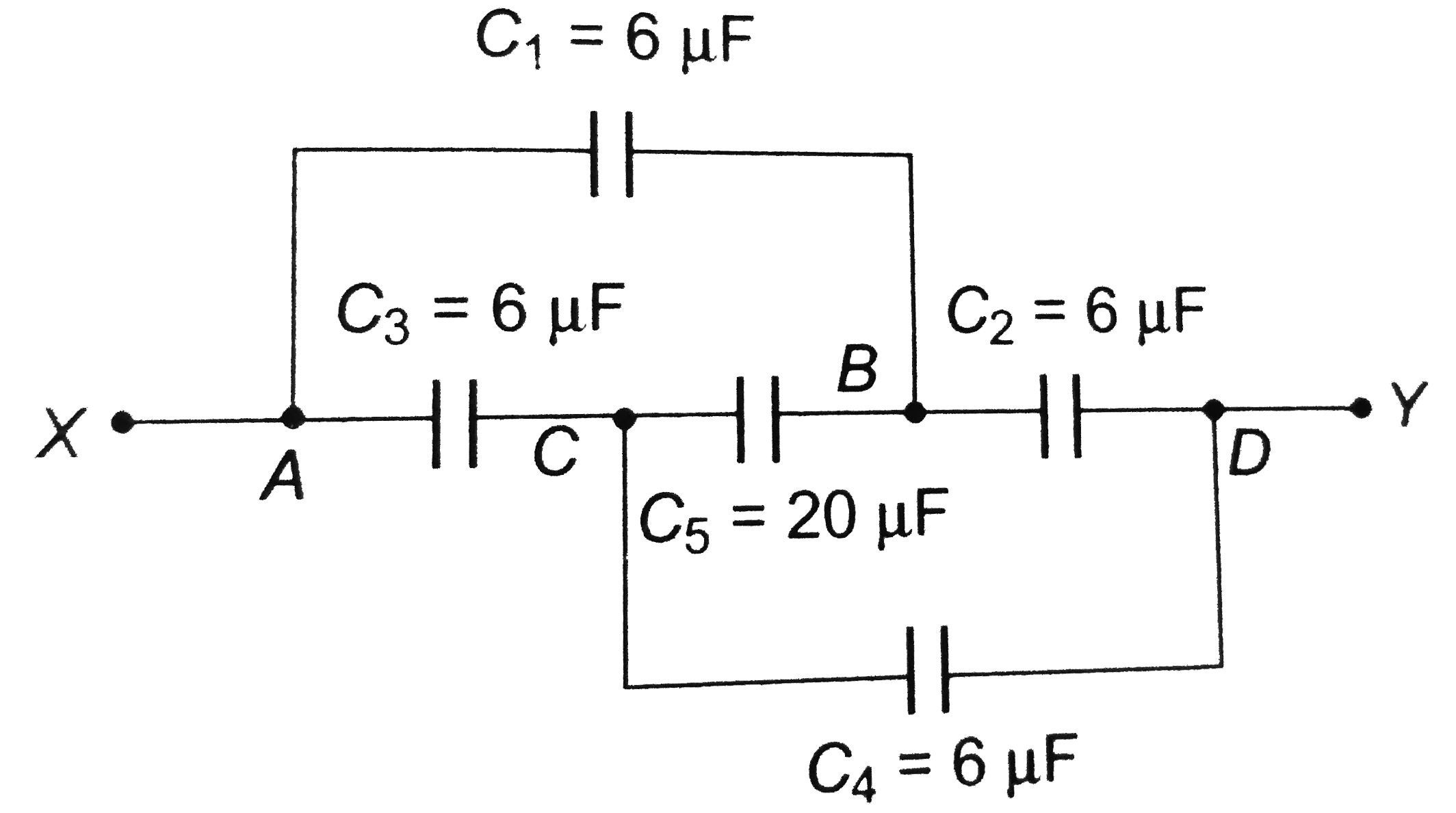 02:52View Solution
02:52View SolutionA parallel plate condenser with a dielectric of dielectric constant K between the plates has a capacity C and is charged to a potential V volt. The dielectric slab is slowly removed from between the plates and then reinserted. The net work done by the system in this process is
03:53View SolutionIf a slab of insulating material` 4 xx 10^(–5) `m thick is introduced between the plates of a parallel plate capacitor, the distance between the plates has to be increased by `3.5 xx 10^(–5)` m to restore the capacity to original value. Then the dielectric constant of the material of slab is
03:57View SolutionA unit charge moves on an equipotential surface from a point A to point B, then
01:34View SolutionIdentify the false statement
02:46View SolutionIn a hollow spherical shell, potential (V) changes with respect to distance (s) from centre as
02:56View SolutionThe 1000 small droplets of water each of radius r and charge Q, make a big drop of spherical shape. The potential of big drop is how many times the potential of one small droplet
02:27View SolutionThe work done in carrying a charge `Q_(1)` once round a circle of radius `R` with a charge `Q_(2)` at the centre is
01:32View SolutionA parallel plate condenser is filled with two dielectrics as shown. Area of each plate is `A "metre"^(2)` and the separtion is `t` metre. The dielectric constants are `K_(1)` and `K_(2)`, respectively. Its capacitance in farad will be
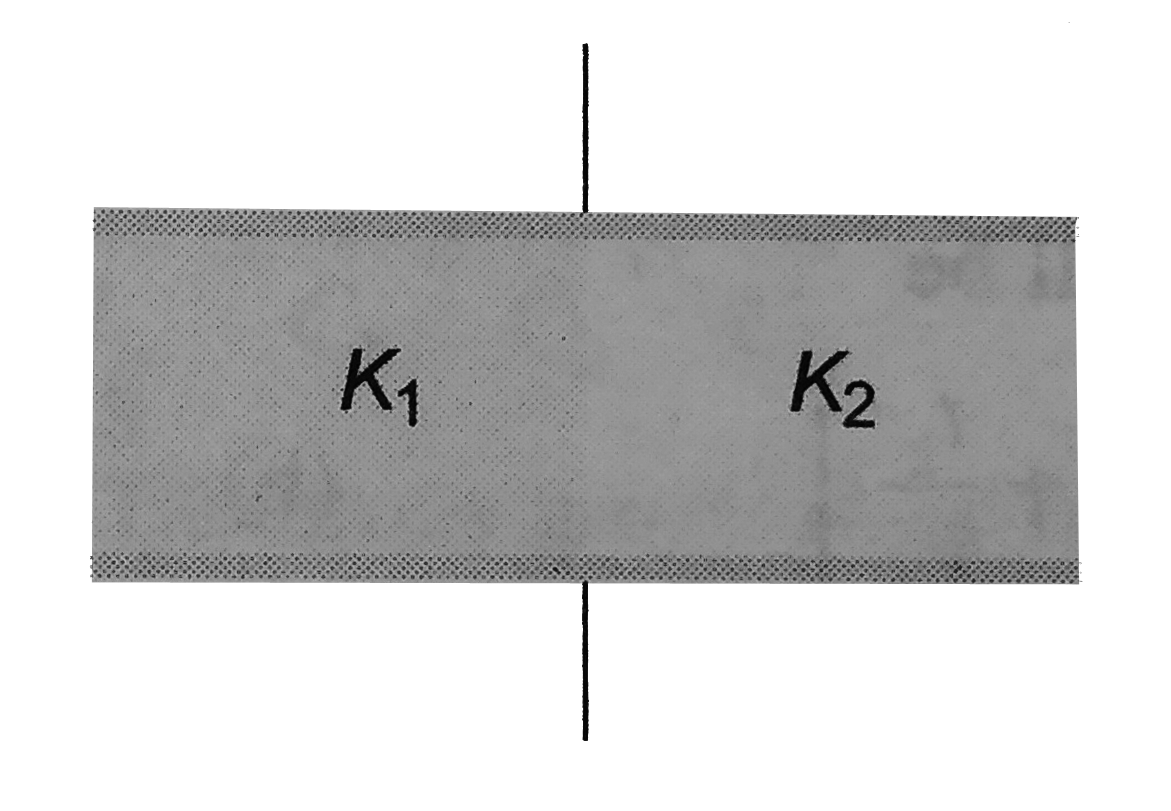 02:20View Solution
02:20View SolutionTwo metal pieces having a potential difference of `800V` are `0.02 m` apart horizontally. A particle of mass `1.96xx10^(-15) kg` is suspended in equilibrium between the plates. If the `e` is the elementary charge, then charge on the particle is
03:26View SolutionA one microfarad capacitor of a TV is subjected to 4000 V potential difference. The energy stored in capacitor is
01:19View SolutionAn uncharge parallel plate capacitor having a dielectric of dielectric constant `K` is connected to a similar air coare parallel plate capacitor charged to a potential `V_(0)`. The two share the charge, and the common potential becomes `V`. The dielectric constant `K` is`
03:06View SolutionIn the circuit given below, the charge in `muC`, on the capacitor having `5 muF` is
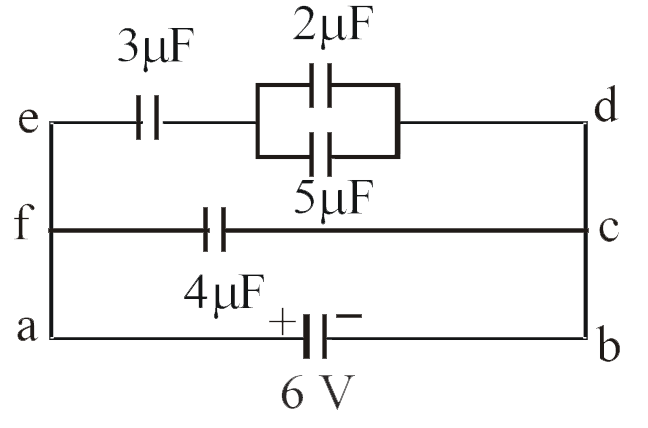 02:56View Solution
02:56View SolutionTwo concentric, thin metallic spheres of radii `R_(1)` and `R_(2)` `(R_(1) gt R_(2))` bear charges `Q_(1)` and `Q_(2)` respectively. Then the potential at distance r between `R_(1)` and `R_(2) will be
03:02View SolutionAn `alpha`-particle is accelerated through a.p.d of `10^(6)` volt the `K.E.` of particle will be
00:59View SolutionFour point charges `-Q, -q, 2q` and `2Q` are placed, one at each corner of the square. The relation between `Q` and `q` for which the potential at the centre of the square is zero is
02:08View SolutionA parallel plate capacitor having a separation between the plates d, plate area A and material with dielectric constant K has capacitance `C_(0)`. Now one-third of the material is replaced by another material with dielectric constant 2K, so that effectively there are two capacitors one with area 1/3A, dielectric constant 2K and another with area 2/3A and dielectric constant K. If the capacitance of this new capacitor is C then `(C)/(C_(0) `is
03:47View SolutionTwo condensers, one of capacity `C` and the other of capacity `C//2` are connected to a `V` volt battery, as shown.
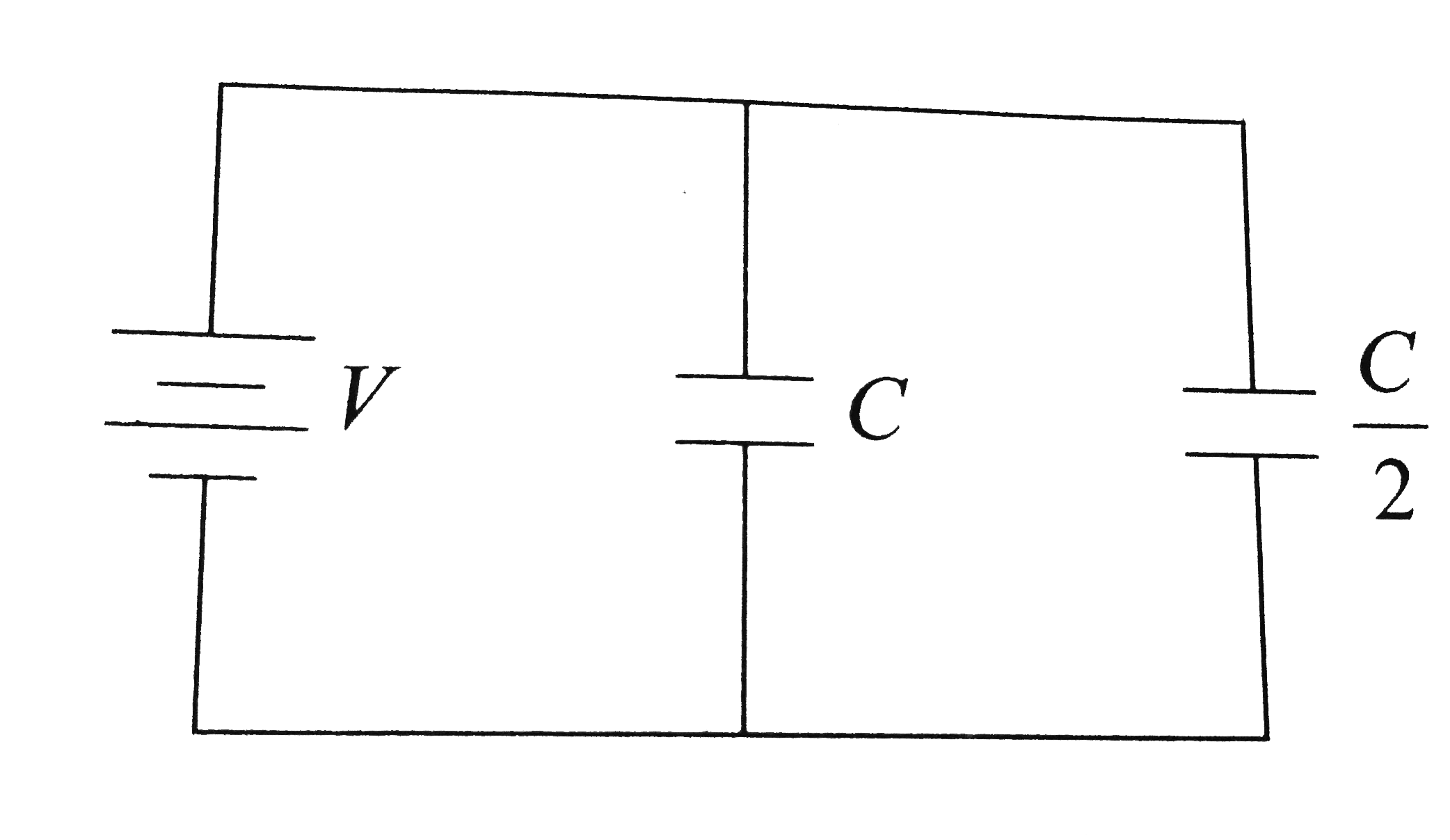
The work done in charging fully both the condensers is01:58View Solution`A, B` and `C` are three points in a unifrom electric field. The electric potential is
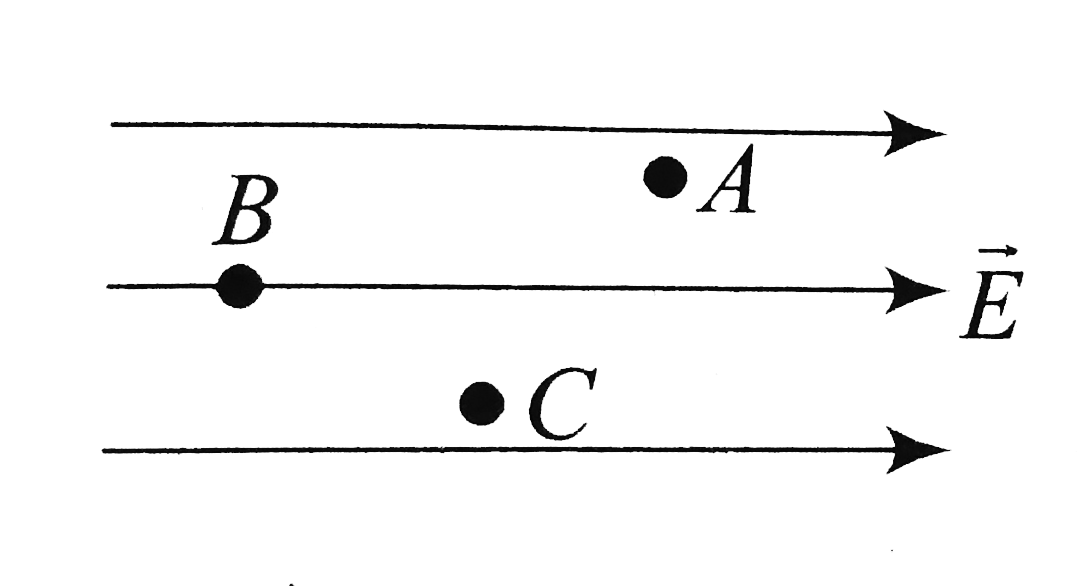 02:09View Solution
02:09View SolutionThree capacitors are connected in the arms of a triangle ABC as shown in figure 5 V is applied between A and B. The voltage between B and C is
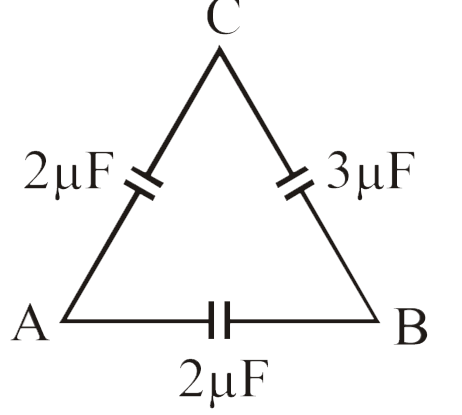 03:30View Solution
03:30View SolutionTwo parallel metal plates having charges `+Q` and `-Q` face each other at a certain distance between them.If the plates are now dipped in kerosene oil tank ,the electric field between the plates will
01:23View SolutionAn air capacitor C connected to a battery of e.m.f. V acquires a charge q and energy E. The capacitor is disconnected from the battery and a dielectric slab is placed between the plates. Which of the following statements is correct ?
05:06View SolutionChoose the wrong statement about equipotential surfaces.
01:46View SolutionTwo spherical conductors A and B of radii a and b (`b gt a`) are placed concentrically in air. A is given charged +Q while B is earthed. Then the equivalent capacitance of the system is
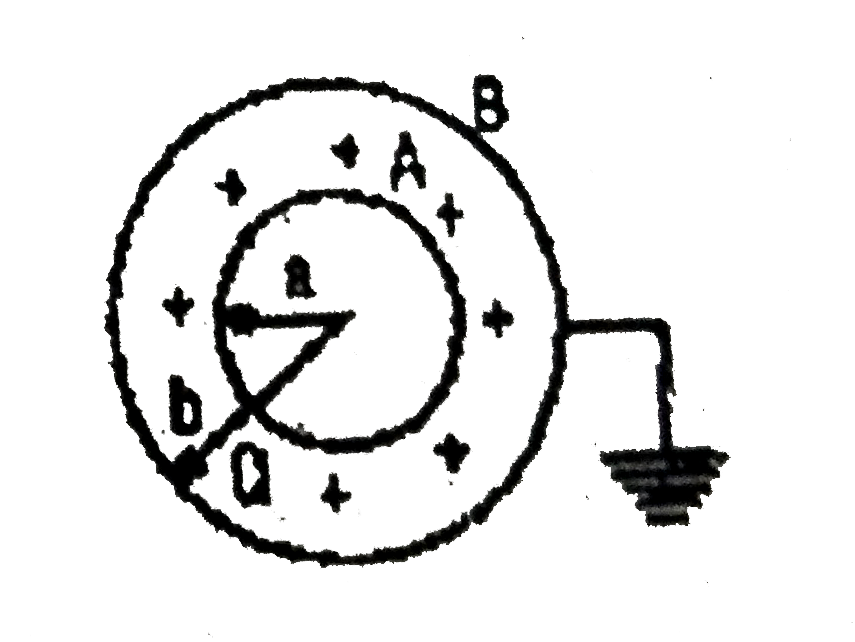 03:24View Solution
03:24View SolutionA capacitor is chared to store an energy `U`. The charging battery is disconnected. An edentical is now connected to the first capacitor in parallel. The energy in each capacitor is now.
03:39View SolutionEquipotentials at a great distance from a collection of charges whose total sum is not zero are approximately
05:35View SolutionWhich of the following figure shows the correct equipotential surfaces of a system of two positive charges?
02:48View SolutionTwo identical metal plates are given poistive charges `Q_1` and `Q_2` `(ltQ_1)` respectively. If they are now brought close together to form a parallel plate capacitor with capacitance C, the potencial difference between them is
06:05View SolutionThe capacitance of the capacitors of plate areas `A_1` and `A_2(A_1 lt A_2)` at a distance d is
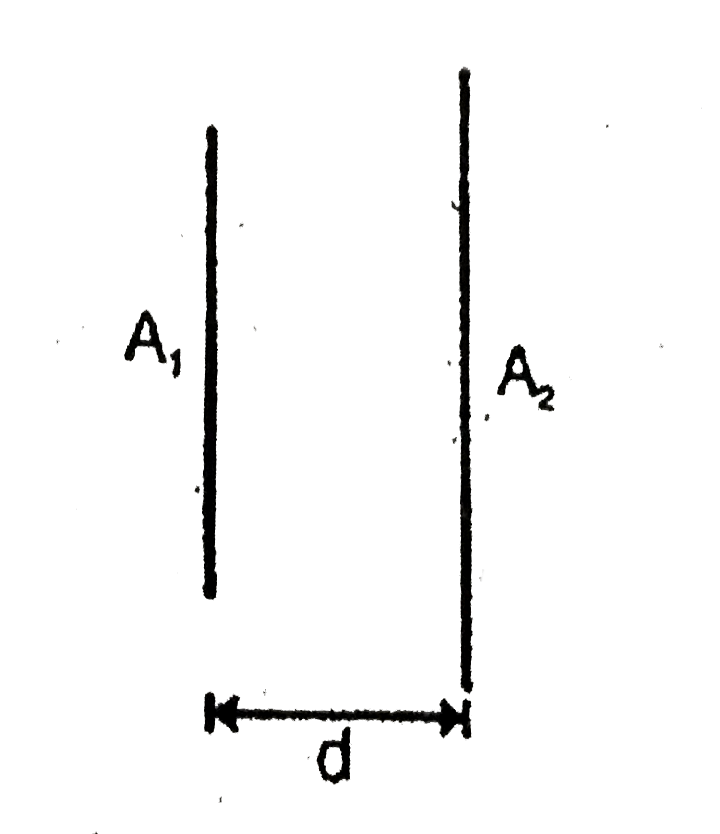 01:25View Solution
01:25View SolutionIn a given network the equivalent capacitance between A and B is `[C_(1)=C_(4)=1muF,C0_(2)=C_(3)=2muF]`
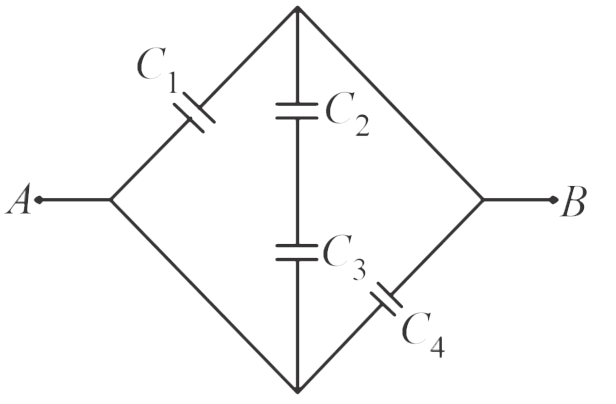 01:48View Solution
01:48View SolutionA parallel plate air capacitor is charged to a potential difference of `V` volts. After disconnecting the charging battery the distance between the plates of the capacitor is increased using an isulating handle. As a result the potential difference between the plates
01:51View Solution(Figure 3.139) shows three circular arcs, each of radius `R` and total charge as indicated. The net electric potential at the center of curvature.
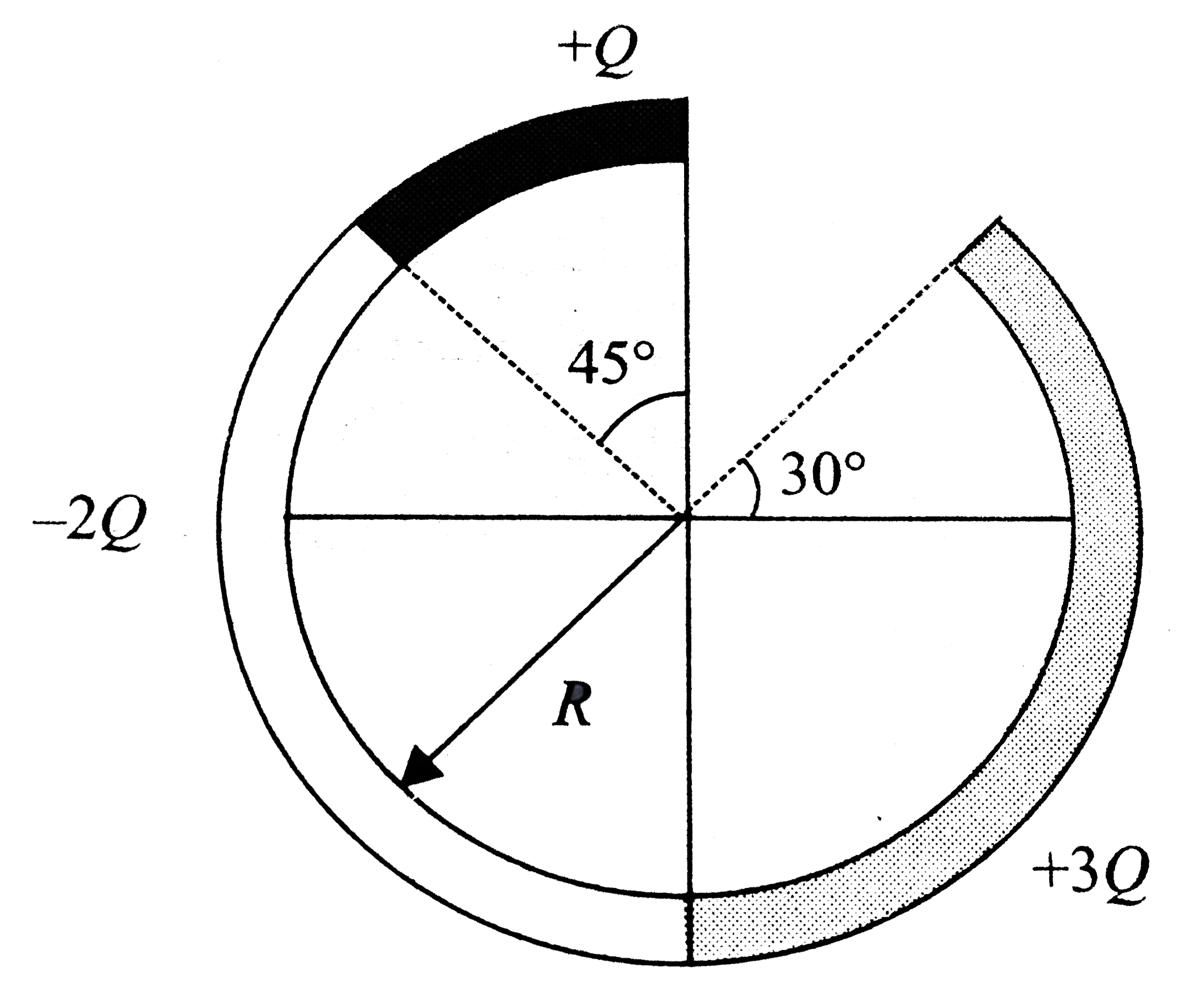 .01:12View Solution
.01:12View SolutionAn electric field `E = (20hati + 30 hatj)` N/C exists in the space. If thepotential at the origin is taken be zero, find the potential at `(2 m, 2 m)`.
02:23View SolutionIf a unit positive charge is taken from one point to another over an equipotential surface ,then
01:29View SolutionThree large plates A, B and C are placed parallel to each other and charges are given as shown. The charge that appears on the left surface of plate B is
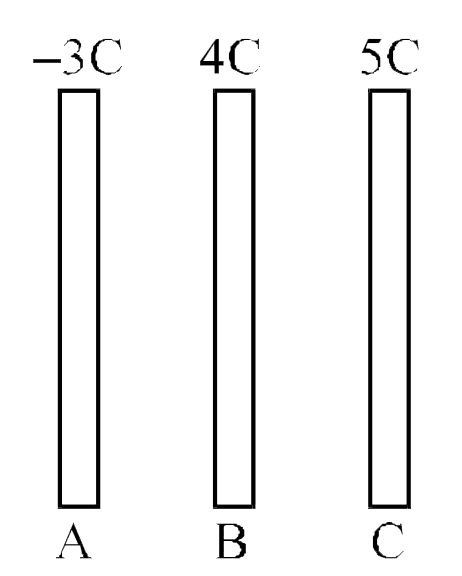 03:13View Solution
03:13View SolutionThree charges `2q, -q, and -q` are located at the vertices of an equilateral triangle. At the center of the triangle,
06:30View SolutionIf a charge `– 150` nC is given to a concentric spherical shell and a charge `+50` nC is placed at its centre then the charge on inner and outer surface of the shell is
02:07View SolutionTwo capacitors of capacitances `C_(_1)` and `C_(2)` are connected in parallel across a battery. If` Q_(1)` and `Q_(2)` respectively be the charges on the capacitors, then `(Q_(1))/(Q^(2))` will be equal to
01:27View Solution
PHYSICS questions and complete solutions for chapter ELECTROSTATIC POTENTIAL AND CAPACITANCE of DISHA PHYSICS (HINGLISH) of Class 11
